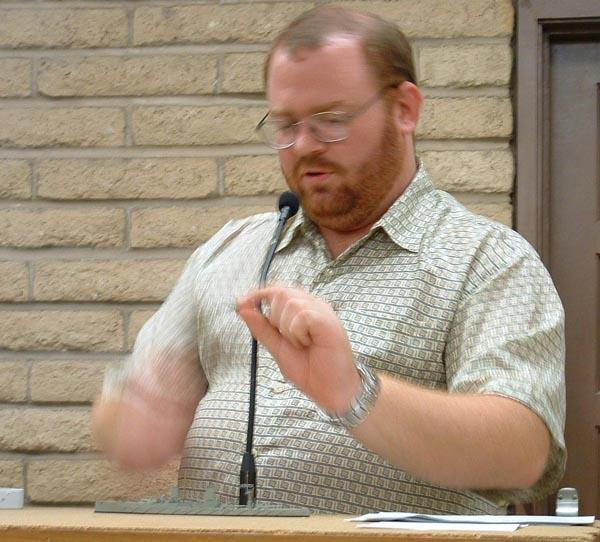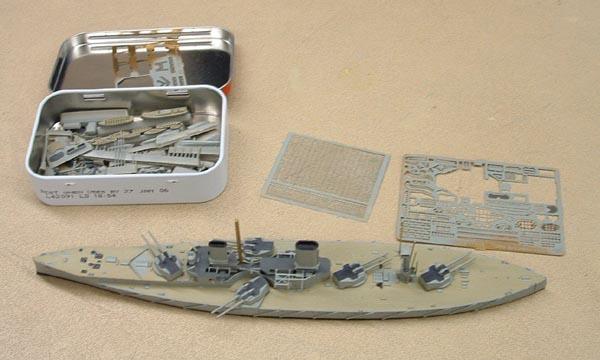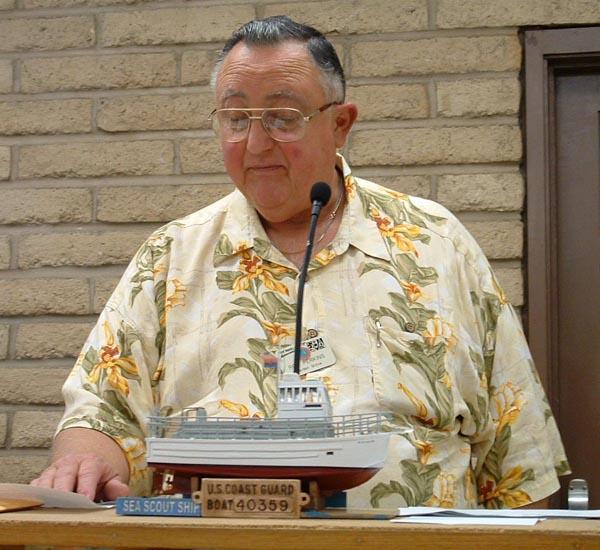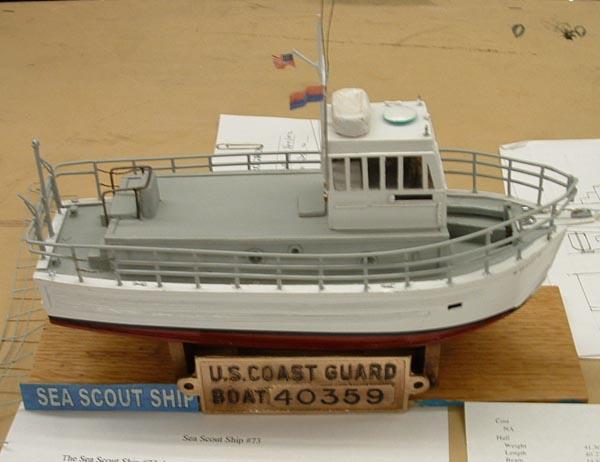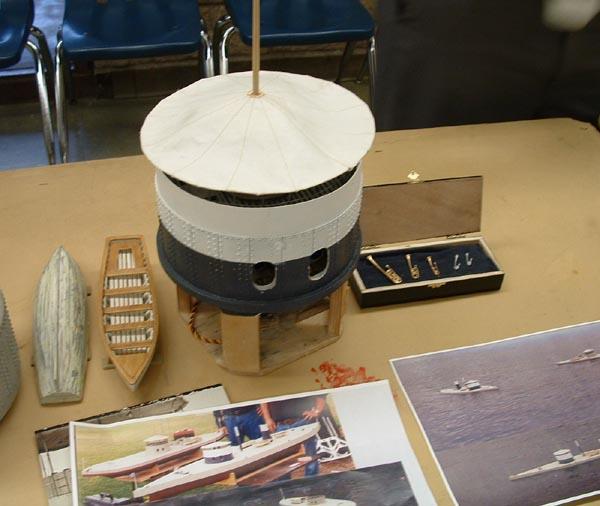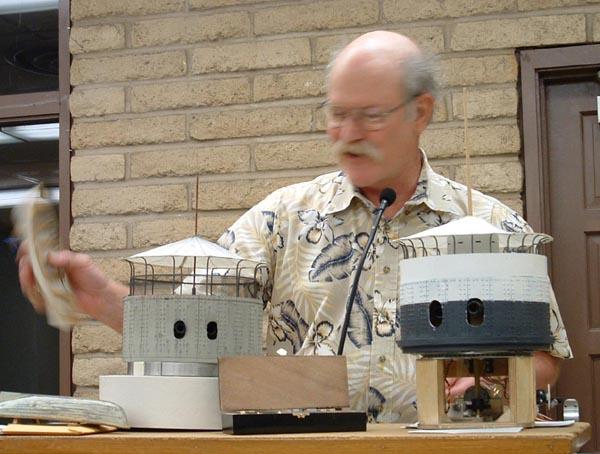 |
SHOW AND TELL June 2005 |
|
PHOTOGRAPHS BY DON DRESSEL |
|
Clyde
Emerson's restorations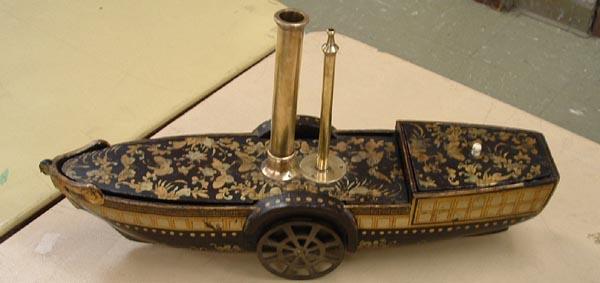 Clyde Emerson does restorations for Vallejo Gallery, and he showed us two of his current projects. An antique tea caddy in the shape of a side-wheel steamer has a wooden hull and decks that conceal lead tea containers. Atop the decks are a tall turned-brass funnel and a whistle pipe. The hull has iron paddle wheels with missing wood covers, which Clyde is recreating. He also made a bone knob replacement on one lid. The piece is said to be Chinese from the 1820’s, made to celebrate the opening of trade on the Pearl River, which, as we all know, runs from Canton to Hong Kong and Macao. My own opinion is that this piece is an early Japanese import item, with lacquer floral decorations like Imari porcelain, probably inspired by Commodore Matthew Perry’s fleet with its big side wheel steamers, which opened trade with Japan in 1853. Tea caddies were used in Europe in the 18th and early 19th centuries when tea was expensive but they disappeared as trade made tea cheap and plentiful. (I guess you can tell that I watch the “Antiques Road Show” on TV.) 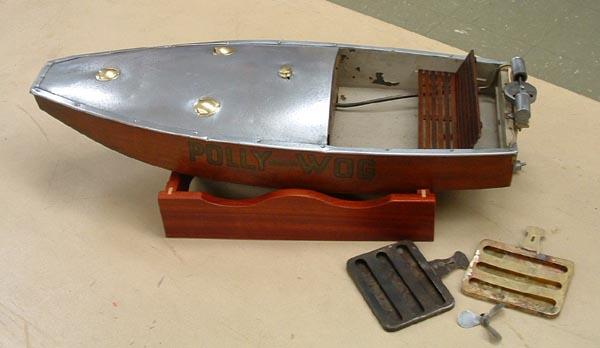 Clyde’s second item is a Boucher Polly Wog live steam pond model from the 1920’s or ‘30’s, which looks like an open speedboat. Inside the hull is a boiler for which Clyde has made a brass fuel tray. He also replace the slat bench seat and a prop blade on the outboard steering and propulsion system. He made a display stand for the model, which will require a little more height to accommodate the propeller. Vallejo is lucky to have a talented artist/craftsman like Clyde on the job. |
Fred
Shaffner's clipper brig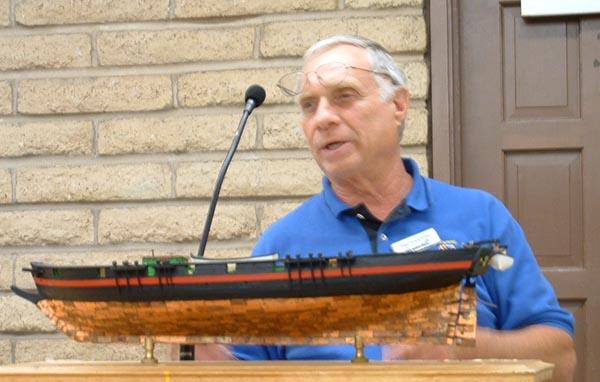 Fred Schaffner is working on an original 5/32”=1’ (1:77) scale 1820’s clipper brig of the type used in the opium trade. He had previously built a model of the opium clipper FROLIC, but felt he could do something with more interesting lines. Starting with a Diker hull for the revenue cutter ROGER B. TANEY (pronounced “tawny” for the Supreme Court Chief Justice who handed down the infamous Dred Scott decision, a leading cause of the Civil War) but I digress, where were we? Fred took this bulkhead hull and inserted foan and balsa fillers, planked it and coppered the bottom. Documentation in the Rhode Island Mariner showed that the clipper ANN McKIM had similar lines, although she was larger and three-masted. With a little ingenuity and extrapolation, Fred recreated his clipper brig’s deck arrangement and furniture. All that remains is the rigging, which is a snap for Fred. |
|
Sean Fallesen's
"DREADNOUGHT" |
|
Ron Perkins'
"VOLUNTEER" |
|
Steve Lund and Bill
Hathaway's
"USS MONITOR" turrets |
Burt Goldstein's "HMCS
AGASSIS"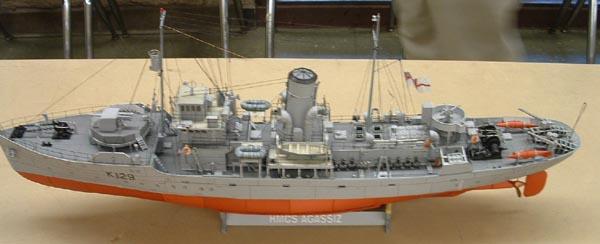 Burt Goldstein brought in his 1:100 Modelik cardstock design HMCS AGASSIZ, which now flys the Canadian flag made by Jim Nunn. Notwithstanding the limitations of his materials, the full-hull model is as authentic a portrait of a WW II Flowerclass corvette as one could wish for. 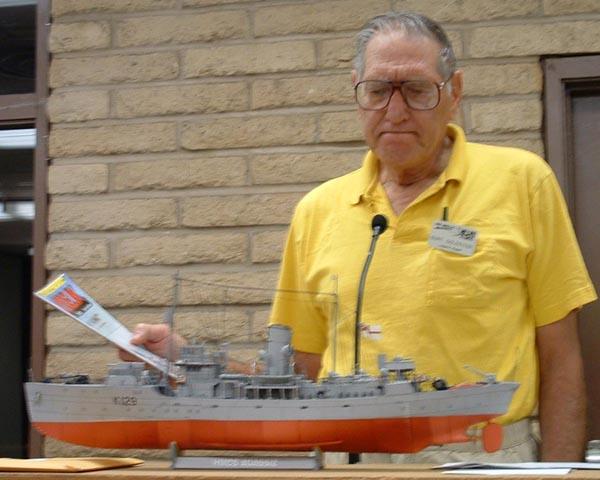 |
Randy Biddle's WWI
Subchaser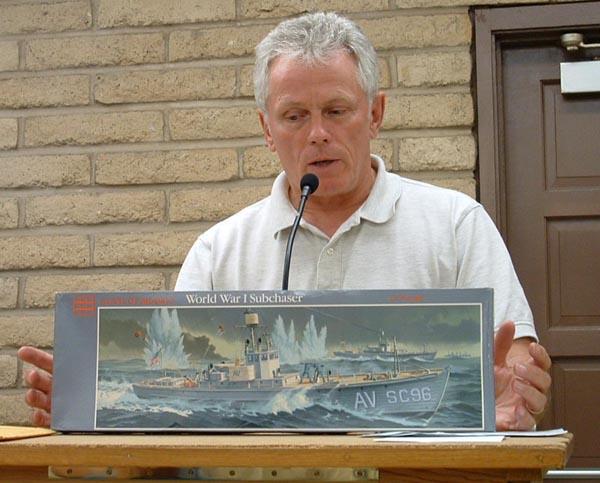 Randy Biddle brought in a Glencoe Models design kit for a WW I sub chaser. It is an early plastic kit for a 1:73 scale model (“box scale” meaning that the model was scaled to fit the box) which, according to Art Herrick is grossly inaccurate. Now it seems that Randy built a highly authentic model of the dragger-fisherman RITA B., and the owners of RITA B. once bought an old WW I surplus sub chaser called ALERT, and they then converted her to a draggerfisherman. |
|
Sid Siegel's Dutch frigate
"SCHAGER ROOS" Sid Siegel’s showed his 1:64 scale model of the Dutch frigate SCHAGER ROOS, a reconstruction based on Van de Velde drawings and photos of contemporary ship models. Many guesses and extrapolations go into the production of a model like this, which can In no way be called an accurate ship model. Sid has commenced rigging the lower shrouds. He makes his own blocks of pear wood in all the sizes and peculiar shapes of 17th century Dutch usage 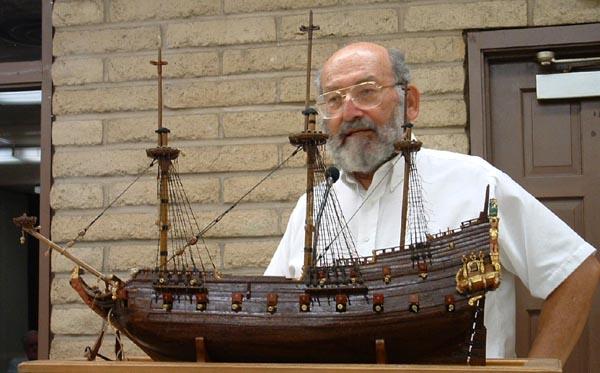 |
